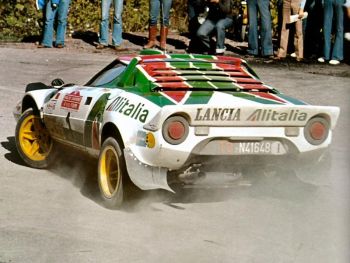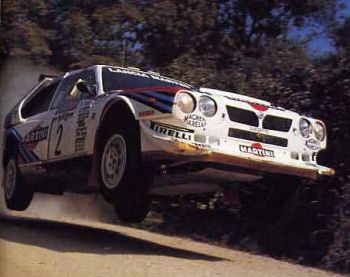 |
|
Abarth will plunge into the action of 50th Sanremo Rally with a 6-car
factory supported line-up as they seek to
etch their name into a record book that has
been dominated over the last half century by
the Italian brands. |
|
|
|

 |
|
In the 49-year history
of the Sanremo Rally, Italian cars have
recorded an astonishing 24 victories,
including Sandro Munari's win with the
Lancia Stratos in 1976, and the domination
of the brutal Martini Delta S4s a decade
later. |
|
|
|
The eighth
round of the Intercontinental Rally Challenge (IRC) is the
legendary Sanremo Rally this weekend, a well-known
fixture on the international calendar that celebrates
its 50th anniversary in 2008. Based in the glamorous
coastal resort of Sanremo, the all-asphalt event uses a
number of classic stages that climb high into the
Maritime Alps.
Abarth will
plunge into the action with a 6-car factory line-up as
they seek to etch the Scorpion name into a hallowed record book that has
been dominated over the last half century by the famous
Italian carmaking brands. Lancia, which built its
powerful modern-day image
on crushing all rivals on the most demanding rally
stages across the globe, has an astounding 19 wins to
its name. Fiat add a further 5 wins whilst even Alfa
Romeo squeezed its name onto the roll of honour with a solitary victory.
As befits
its iconic status, Sanremo utilises a somewhat different
format to the other IRC events. The rally gets underway
at 17:00 on Thursday afternoon (25 September) with four
thrilling stages split into two loops. The final stage
of Thursday – Ronde – is held entirely in the dark and
is the longest of the entire IRC calendar, at a mammoth
59.99 kilometres, before the competitors return to parc
ferme after midnight. The rally resumes on Friday with
four more stages during the day and concludes with the
final four stages on Saturday before the finish podium
at 15:00. In total, there are 258.51 kilometres of
competitive action over the three days.
The mountain roads around Sanremo take in a wide variety
of speeds, corners and surfaces. The well-known stages
can be bumpy, with old asphalt frequently giving way to
a newer surface. This makes grip levels notoriously
inconsistent. The roads are narrow in places and often
extremely slippery, particularly under braking. The
route also contains several hairpin bends, requiring
judicious use of the handbrake. Most of the stages are
reasonably long, meaning that it is important for the
drivers to establish a good rhythm straight away. It is
definitely an event where experience counts.
With Europe now in the grip of autumn, weather
conditions are always a factor on the Sanremo Rally each
year. There can be
mist and fog in the mornings and evenings, as well as
rain at high altitude. The falling autumn leaves tend to
cover the mountain roads in slippery vegetation: an
unexpected hazard that has caught out more than one
driver in the past. This makes tyre choice extremely
difficult, so victory in Sanremo usually contains a
strong tactical element. All the greats of the sport
have won this event in the past, with names such as
Sandro Munari, Markku Alen, Colin McRae and Tommi
Makinen all appearing on the roll of honour.
The scenery of the Ligurian coast is stunning, with the
rally route running through several villages that cling onto mountainsides overlooking the sea. The event always
attracts huge crowds of enthusiastic spectators, who
even decorate the roads with the names of their heroes.
|